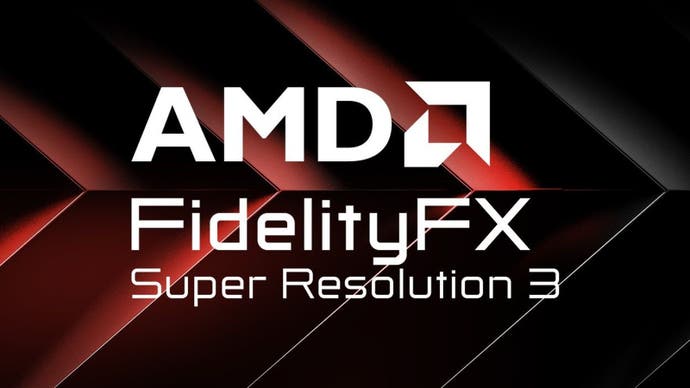DF Weekly: Is FSR 3 frame generation viable for console games?
Expectation management.
Inevitably, the latest DF Direct Weekly arrives today, with plenty of discussion about Starfield in the wake of the review embargo, while we also talk about the compromises required to get Baldur's Gate 3 out this year on Xbox Series consoles. Series S loses the challenging split-screen feature, with its addition planned for some point in the future. However, I want to spend the lion's share of this blog discussing the reaction to AMD's FSR 3 frame generation technology and potential integrations on current-gen consoles, because we can't help but feel that a certain level of expectation management is required.
It seems that people are very excited about the possibilities here and to be fair, I get it. Myself, John and Alex experienced FSR 3 on PC versions of Forspoken and Immortals of Aveum, and in terms of image quality and frame-rate increases, it's clear that the technology is legit and it's definitely comparable to DLSS 3. And yes, it's also going to be open source, meaning that it can be deployed on practically any graphics hardware including the current generation of consoles.
However, it's also fair to say that expectations for the console implementation are sky high and perhaps unrealistic based on what we know of it so far. Of course, Digital Foundry will be reviewing FSR 3 in due course and we should have a much tighter grip on what the technology is capable of then, but right now, a number of caveats should be slapped on to possible console implementations.
- 0:00:00 Introduction
- 0:01:14 News 01: Starfield: reviews and reactions
- 0:44:09 News 02: Baldur’s Gate 3 to hit Xbox this year, without Series S split-screen
- 0:49:45 News 03: PSA: FSR 3 won’t fix console performance
- 1:00:39 News 04: Volition closes after 30 years
- 1:08:30 News 05: Sonic Superstars impressions!
- 1:12:52 News 06: Armored Core 6 is good on PC
- 1:20:49 Supporter Q1: Did you see Switch 2 at Gamescom? And do you think the Switch 2 in portable mode could run Switch 1 software with docked mode settings?
- 1:25:15 Supporter Q2: Do you think running games designed for CRTs at super high resolutions makes sense?
- 1:29:49 Supporter Q3: Should DF give medals for technically accomplished games?
- 1:35:14 Supporter Q4: What games would you like to see remastered by Nightdive Studios?
First of all, we need to talk about latency. The concept of frame generation relies on the idea of rendering the current frame and the one beyond it, with a combination of motion vectors and optical flow analysis producing the intermediate frame. So, potentially, there is extra lag there - the time taken to render the extra frame, along with the time taken to calculate the intermediate one. Nvidia's solution in DLSS 3 is to use its Reflex latency reduction technology to mitigate the extra lag. AMD has its own driver-level Anti-Lag technique, plus a new Anti-Lag+ tech we don't know much about.
And there's the first caveat. While Nvidia and AMD are mitigating the extra latency, the chances are that mitigating lag on console implementations will be entirely down to the developer itself... and we'd expect those developers to be doing the best they can do to lower input lag already. Secondly, what we've seen right now with FSR 3 seems to suggest that frame-pacing is managed primarily with v-sync active - which may have latency implications of its own. It's worth remembering that most console games have v-sync active, too.
Next up, AMD has specified that the base frame-rate before using FSR 3 should be 60 frames per second, while the general hope for FSR 3 on consoles is that it could be used to make 30 frames per second experiences run at 60fps instead. This just isn't going to happen. In a best case scenario, we might see higher frame-rate experiences based on games that are already running well at 60Hz.
This brings us onto the new obstacle: the processing time of FSR 3 itself. How fast a frame is generated varies according to how much 'spare' time is left on the GPU. FSR 3 uses asynchronous compute to utilise that spare time in generating the next frame. If a game uses async extensively, the leftover GPU time is less generous, meaning longer frame generation time. On top of that is the fact that we've only seen FSR 3 running on an RX 7900 XTX - the GPUs in the Series X and PlayStation 5 are much, much slower.
All told then, the best candidates for FSR 3 on consoles are games targeting 60 frames per second already, and where we'd need sufficient GPU overhead left over for FSR 3 to do its thing and where either the latency is very low to begin with, or where the developer is somehow able to mitigate the difference in response that frame generation brings.
There are plenty of question marks remaining on this one then and we expect the open testing period on complete FSR 3 integrations on PC games to prove illuminating - and of course, since there are console-equivalent GPUs available on PC, it'll be relatively easy to put all of this to the test. Ultimately though, I hope this provides a bit more context into FSR 3 on consoles and the role of frame generation in the console space - and more generally, I do hope you enjoy this week's DF Direct Weekly. Filming this and interacting with backers of our Supporter Program in putting the show together really is one of the highlights of my week. Also, look out for a more focused Starfield Direct in a few days' time.









